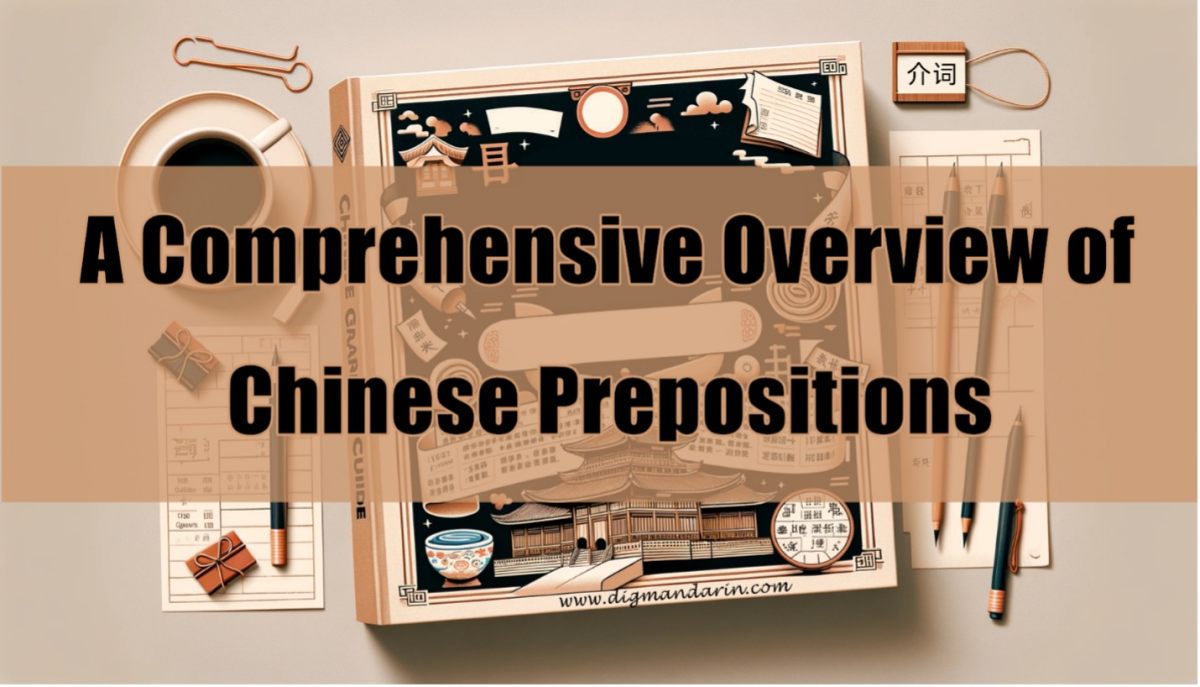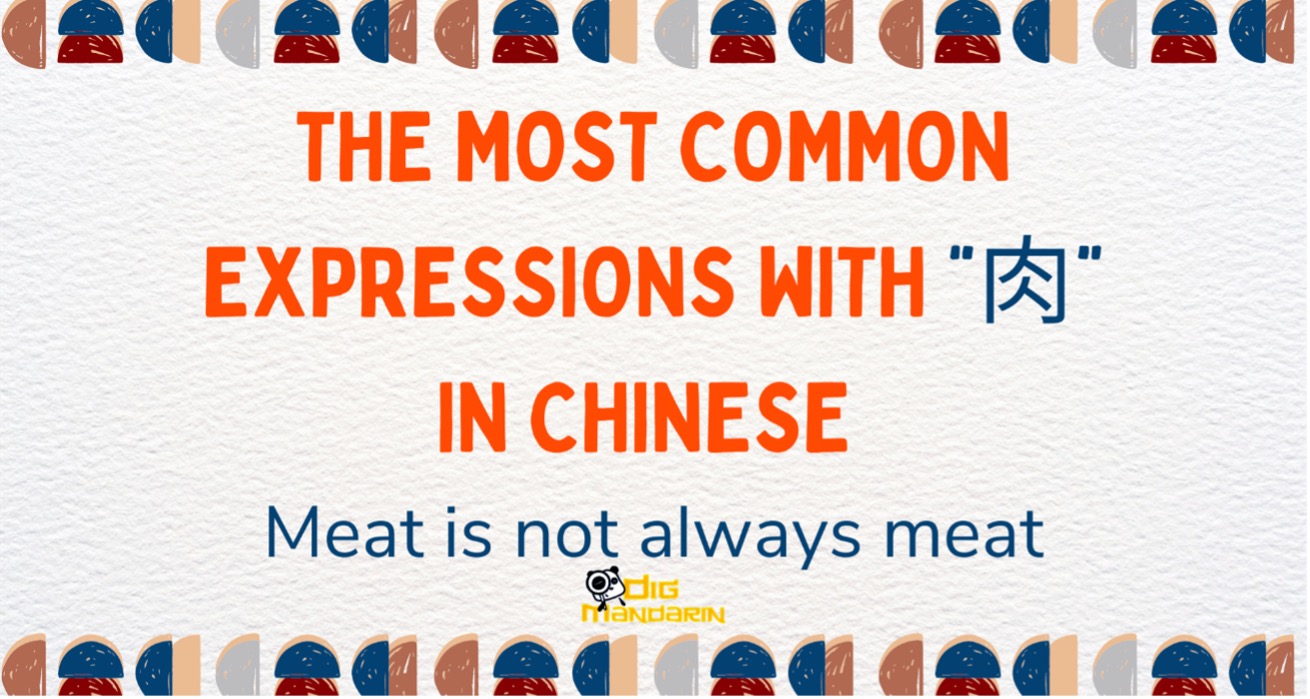Mastering 把 Sentences: Key Uses and Examples for Chinese Learners
Are you struggling with mastering 把 sentences in Chinese? You’re not alone! For many learners, this grammar concept can be a major pain point. But fear not, as we’re here to guide you through the key uses of 把 and provide you with helpful examples. From beginner to advanced levels, 把 will be an essential part of your Chinese learning journey. So, let’s dive in and unlock the secrets of 把 together!
- 1. 把 as a preposition
- 2. The key uses of 把 (1)
- 3. The key uses of 把 (2)
- 4. The Negative Form of 把 Sentences
- 5. Special Notes for 把 Sentences
把 as a preposition
The crucial thing goes first. Based on the new formation of words in 把 sentences, it does seem like one of the most difficult sentence structures in Chinese grammar. When functioning as a preposition, its construction is very different from the equivalent form in English. The structure of 把 sentences is a quite typical form of expression in Chinese.
The definition of 把 Sentences
把 sentences have a unique structure where the object is placed at the beginning of the sentence, instead of the typical SVO (subject+verb+object) structure in Chinese. This is achieved by using 把 as a preposition, which functions as an adverbial modifier. In English, 把 can be translated as have, make, or let. While this structure may seem challenging, most 把 sentences can be rewritten in the Verb + Object order.
The key uses of 把 (1)
把 sentences show that the subject has changed the state of the object or person indicated after 把. It can describe a change of position, ownership, or state.
Subject + 把 + Object + Verb + 在/ 到 + Place
This pattern emphasizes the object’s change of position. The Place is usually where the Object will end up.
e.g.
小张把书包放在桌子上。(Xiǎo Zhāng bǎ shūbāo fàng zài zhuōzi shàng.) Xiao Zhang put the bag on the table.
妈妈把孩子们送到学校了。(Māma bǎ háizimen sòng dào xuéxiàole.) Mom sent the kids to school.
我想把这张照片挂在墙上。(Wǒ xiǎng bǎ zhè zhāng zhàopiàn guà zài qiáng shàng.) I want to hang this picture on the wall.
Subject + 把 + Object 1 + Verb + (给) + Object 2
This pattern emphasizes that the ownership of Object 1 has shifted from the Subject to Object 2.
e.g.
学生们想把这个礼物送给老师。(Xuéshēngmen xiǎng bǎ zhège lǐwù sòng gěi lǎoshī.) The students wanted to give this gift to the teacher.
他已经把汉语书还给我了。(Tā yǐjīng bǎ hànyǔ shū huán gěi wǒ le.) He has already returned the Chinese book to me.
你能把机票钱借给我吗?(Nǐ néng bǎ jīpiào qián jiè gěi wǒ ma?) Can you lend me the money for the plane ticket?
Subject + 把 + Object + Verb + Complement
Elementary usage:
Complements of result, direction, or state can all be used in this structure.
e.g.
早上奶奶把脏衣服洗完了。(Zǎoshang nǎinai bǎ zāng yīfu xǐ wán le.) Grandma finished washing the dirty clothes in the morning.
->完了 is the result complement.
中午我把这些衣服挂起来了。(Zhōngwǔ wǒ bǎ zhèxiē yīfu guà qǐláile.) I hung up these clothes at noon.
->起来 is the directional complement.
晚上弟弟把干衣服叠得整整齐齐的。(Wǎnshàng dìdi bǎ gān yīfu dié de zhěngzhěngqíqí de.) In the evening, my brother neatly folded the dry clothes.
->整整齐齐的 is the state complement.
Intermediate usage:
In addition to result, direction, and state complements, this pattern can also use action-measure and time-measure complements.
e.g.
钢琴老师把这首曲子又弹了一遍。(Gāngqín lǎoshī bǎ zhè shǒu qǔzi yòu tánle yíbiàn.) The piano teacher played the piece again.
记者把这篇文章改了好几次。(Jìzhě bǎ zhè piān wénzhāng gǎile hǎojǐcì.) The reporter changed the article several times.
这对夫妻把孩子养了二十年。最近他们才发现孩子不是自己的。(Zhè duì fūqī bǎ háizi yǎngle èrshí nián. Zuìjìn tāmen cái fāxiàn háizi búshì zìjǐ de.) The couple raised their child for twenty years. It was only recently that they discovered that the child was not theirs.
Subject + 把 + Object + Verb + (一/了) + Verb
This pattern emphasizes the result or influence of an action on the object in 把 sentences. When using verb reduplication forms like “VV”, “V一V”, and “V了V”, it can indicate a soft mood or the quickness of an action.
e.g.
你把这张桌子擦一擦,太脏了!(Nǐ bǎ zhè zhāng zhuōzi cā yī cā, tài zàngle!) You wipe this table, it’s so dirty!
我需要再把我的作业检查检查。(Wǒ xūyào zài bǎ wǒ de zuòyè jiǎnchá jiǎnchá.) I need to get my homework checked again.
妈妈把孩子抱了抱,又放下了。(Māma bǎ háizi bàole bào, yòu fàngxiàle.) The mother hugged the kid and put them down again.
Subject + 把 + Object + (给) + Verb + 了/着
Subject + 把 + Object + (给) + Verb + 了
This pattern indicates that an action has been completed.
e.g.
这个小孩悄悄地把碗给洗了。(Zhège xiǎohái qiāoqiāo de bǎ wǎn gěi xǐle.) The child quietly washed the dishes.
你不认识我了?你把我给忘了呀!(Nǐ bú rènshi wǒle? Nǐ bǎ wǒ gěi wàngle ya!) You don’t know me anymore? You forgot me!
老师又把你批评了?(Lǎoshī yòu bǎ nǐ pīpíng le?) Did the teacher criticize you again?
Subject + 把 + Object + (给) + Verb + 着
This pattern indicates the arrival of a new state.
e.g.
你的东西太多了。我帮你把书拿着。(Nǐ de dōngxi tài duōle. Wǒ bāng nǐ bǎ shū názhe.) You have too many things. I’ll help you hold the book.
坐飞机别忘了把护照给带着。(Zuò fēijī bié wàngle bǎ hùzhào gěi dàizhe.) Don’t forget to bring your passport with you if you’ll be flying.
你把厚衣服穿着,今天很冷。(Nǐ bǎ hòu yīfú chuānzhe, jīntiān hěn lěng.) Wear thick clothes. It’s cold today.
Subject + 把 + Object + Adverb + Verb
This pattern emphasizes the state of the action. Adverbs should be placed before the verb and after the object.
e.g.
你总是把衣服乱放!衣架在这里。(Nǐ zǒng shì bǎ yīfu luàn fàng! Yījià zài zhèlǐ.) You always leave your clothes lying around! The hanger is here.
我想把书包用洗衣机洗,可以吗?(Wǒ xiǎng bǎ shūbāo yòng xǐyījī xǐ, kěyǐ ma?) I want to wash my schoolbag in the washing machine, is that ok?
我听不懂,你把话明说吧。(Wǒ tīng bù dǒng, nǐ bǎ huà míngshuō ba.) I don’t understand, please explain it clearly.
Subject + 把 + Object + 一 + Verb, …
This pattern highlights the occurrence of an action, often closely followed by another action or state.
e.g.
他把灯一关就睡着了。(Tā bǎ dēng yì guān jiù shuìzhele.) He fell asleep as soon as he turned off the light.
我把钥匙一拿,准备出门散步。(Wǒ bǎ yàoshi yì ná, zhǔnbèi chūmén sànbù.) As soon as I took the keys, I prepared to go out for a walk.
我把钱一还,觉得轻松多了。(Wǒ bǎ qián yì huán, juédé qīngsōng duōle.) As soon as I returned the money, I felt much more relaxed.
Subject + 把 + Object 1 + Verb + Object 2
This pattern shows that the action was achieved by using Object 1.
e.g.
我把零钱给了那个老人。(Wǒ bǎ língqián gěile nàgè lǎorén.) I gave the change to the old man.
这对夫妻想把这些东西换钱。(Zhè duì fūqī xiǎng bǎ zhèxiē dōngxi huàn qián.) The couple wanted to exchange these things for money.
老板把公司的钱买了股票。(Lǎobǎn bǎ gōngsī de qián mǎile gǔpiào.) The boss bought the stock with the company’s money.
The key uses of 把 (2)
The following 把 sentence patterns illustrate how the subject brings about a new result or state.
Non-living Subject + 把 + Object + Verb + Other elements
This structure shows how an inanimate Subject causes the Object’s state to change.
e.g.
大雨把窗外的衣服淋湿了。(Dàyǔ bǎ chuāngwài de yīfu línshīle.) The heavy rain soaked the clothes outside the window.
这些钱把他的难题解决好了。(Zhèxiē qián bǎ tā de nántí jiějué hǎole.) The money solved his problem.
寒冷的天气把我冻感冒了。(Hánlěng de tiānqì bǎ wǒ dòng gǎnmàole.) The chilly weather gave me a cold.
Subject + 把 + Object + Verb + Other elements
The Object in this structure is the agent of the action, but it’s the Subject that causes them to do so.
e.g.
学生们把汉语老师气得头疼。(Xuéshēngmen bǎ hànyǔ lǎoshī qì de tóuténg.) The students gave the Chinese teacher a headache.
她男朋友把她笑得流眼泪。(Tā nán péngyǒu bǎ tā xiào de liú yǎnlèi.) Her boyfriend made her laugh until she cried.
孩子把爷爷感动得不得了。(Háizi bǎ yéye gǎndòng de bùdéliǎo.) The kid moved his grandpa very much.
The Negative Form of 把 Sentences
To negate a 把 sentence, the negator should be placed before the 把 particle, which is different from normal Chinese sentence patterns.不 is not used in 把 sentences, instead 没, 没有, and 别 are often used instead.
e.g.
你别把钱借给他,他不诚实。(Nǐ bié bǎ qián jiè gěi tā, tā bù chéngshí.) Don’t lend him money. He’s dishonest.
这个孩子又没把衣服洗干净。(Zhège háizi yòu méi bǎ yīfú xǐ gānjìng.) The kid didn’t wash his clothes again.
你没有把汉语作业交给老师吗?(Nǐ méiyǒu bǎ hànyǔ zuòyè jiāo gěi lǎoshī ma?) Did you not give your Chinese homework to the teacher?
Special Notes for 把 Sentences
1) Specific objects in 把 sentences
In 把 sentences, the object must be definite, specific or known based on the context or speakers.
e.g.
Incorrect:我把三个饺子吃了。(Wǒ bǎ sān gè jiǎozi chīle.)
Correct:我把饺子吃了。(Wǒ bǎ jiǎozi chīle.)I ate the dumplings.
Incorrect:他把一个钱包拿走了。(Tā bǎ yīgè qiánbāo ná zǒu le.)
Correct:他把那个钱包拿走了。(Tā bǎ nàgè qiánbāo ná zǒu le.) He took that wallet away.
2) Verbs that cannot be used with 把
Certain verbs cannot be used as the predicate in 把 sentences.
These include intransitive verbs, which cannot be followed by any object, such as 旅行、旅游、游泳、跳舞、合作、结婚、睡觉、吃饭, etc.
Some verbs of judgment or state can’t be used as the predicate in 把 sentences, such as 有、是、像、在、and 存在.
Some verbs expressing thought or senses can’t be used as the predicate in 把 sentences, such as 知道、同意、觉得、希望、渴望、期望、喜欢、爱、要求、看见、听见、and 学习.
Some directional verbs can’t be used as the predicate in 把 sentences, such as 上、下、进、出、回、到、过、起, etc.
3) The placement of the auxiliary verb in 把 sentences
Auxiliary verbs should be placed just before 把.
Subject + Auxiliary Verb + 把 + …
e.g.
会:
我们会把作业写完的。(Wǒmen huì bǎ zuòyè xiě wán de.) We will finish the homework.
可以:
他可以把车停在这里。(Tā kěyǐ bǎ chē tíng zài zhèlǐ.) He can park his car here.
想:
爸爸想把垃圾扔了。(Bàba xiǎng bǎ lājī rēngle.) Dad wants to throw out the trash.
4) Time words in 把 sentences
Time words should be placed before 把 or before the Subject.
Subject + Time Word + 把 + …
Time Word + Subject + 把 + …
e.g.
我昨天把钱弄丢了。(Wǒ zuótiān bǎ qián nòng diū le.) I lost my money yesterday.
明天你把书带来学校。(Míngtiān nǐ bǎ shū dài lái xuéxiào.) Bring the book to school tomorrow.
你们早上把早餐吃了再来上班。(Nǐmen zǎoshang bǎ zǎocān chīle zàilái shàngbān.) You all eat breakfast in the morning before you go to work.
把 has other meanings and uses apart from its prepositional function. One of its common uses is as a measure word. To learn more about this point, please refer to “All About ‘把’ — The Use As A Measure Word.“
Mastering 把 sentences is an essential skill for Chinese learners who want to communicate effectively in Mandarin. By understanding the key uses and structures 把 sentences, you can express actions and events more accurately and vividly. Remember to keep in mind the tips and common mistakes mentioned in this article, and practice using 把 in your daily conversations and writings. With dedication and perseverance, you can become proficient in using 把 and take your Chinese language skills to the next level.





very useful to understand lessons HSK 3